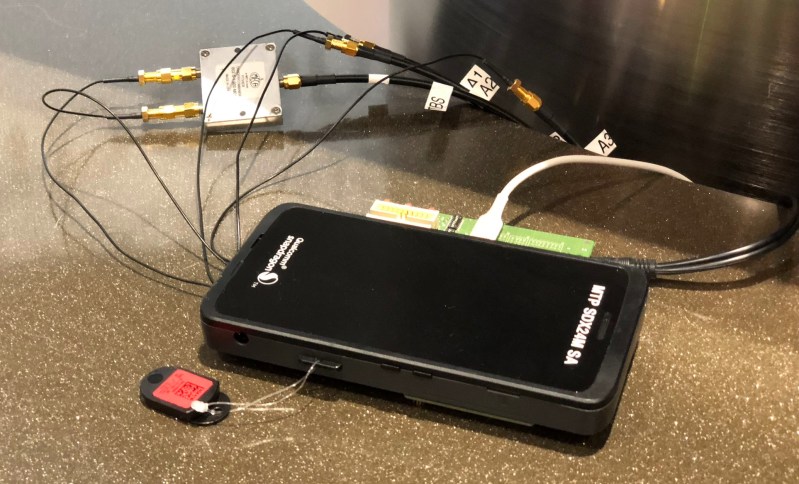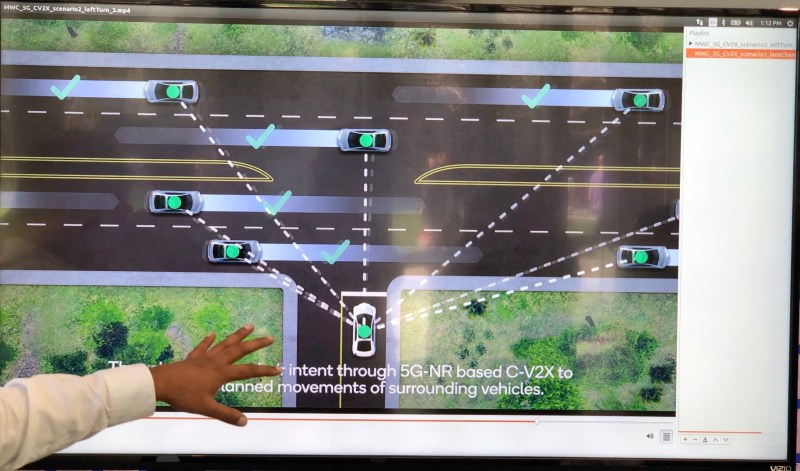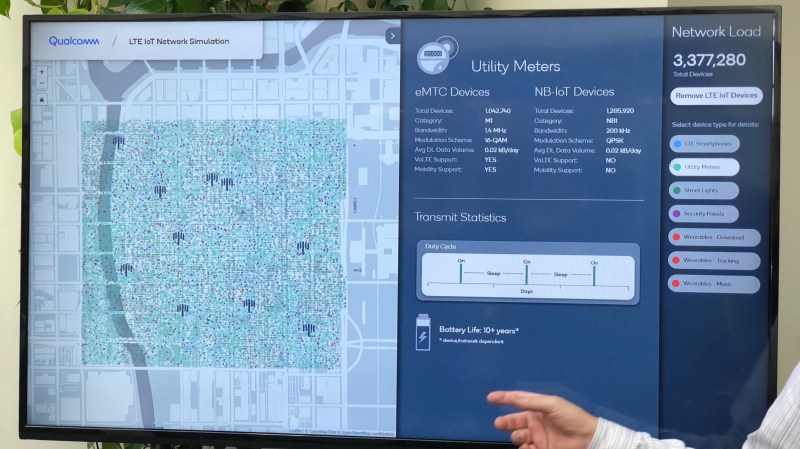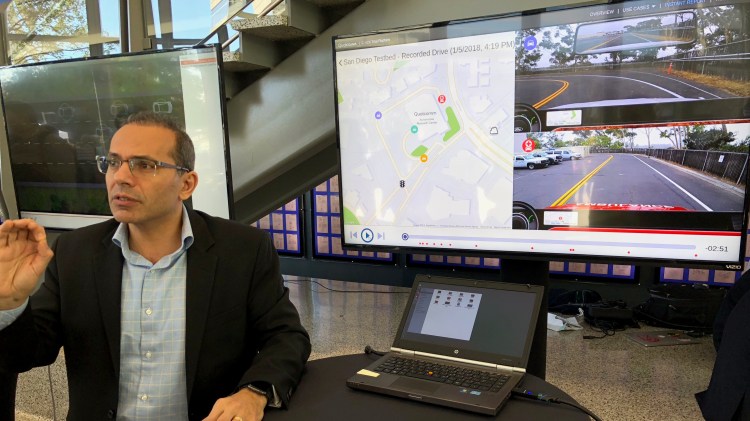Following Qualcomm’s announcement that 37 manufacturing and carrier partners are working to bring 5G wireless devices to market in 2019, the San Diego-based company today announced Snapdragon X24, the world’s first 2Gb per second 4G/LTE modem, and a series of successful tests demonstrating 5G’s power in automotive, industrial, and office environments. Confidential until today, the X24 and 5G demonstrations were shown to VentureBeat last week and are planned for public display at the upcoming Mobile World Congress in Barcelona.

Above: A prototype device containing Qualcomm’s new Snapdragon X24 modem is shown on Feb. 7, 2018.
Qualcomm touts the Snapdragon X24 as a bridge between 4G and 5G standards, enabling higher transfer speeds than any prior LTE modem — a way for carriers to offer gigabit-plus speeds over existing LTE networks as a backup during 5G network deployment. X24 is the world’s first-announced Category 20 modem, as well as the first-announced chip built on a 7-nanometer process, supporting up to 2Gb per second “fiber-like” download speeds. That’s twice as fast as Qualcomm’s original Gigabit LTE modem, leveraging 7 times carrier aggregation and 4×4 MIMO on up to five LTE carriers for a total of 20 concurrent spatial LTE streams. These features enable the X24 to use all licensed and unlicensed spectrum a mobile operator has available. It will be demonstrated live with Ericsson, Telstra, and Netgear at the Mobile World Congress.
Car enthusiasts will be interested in the 5G Cellular Vehicle-to-Everything (C-V2X) test, which demonstrates how upcoming 5G-connected autonomous cars will communicate with each other and traffic control centers. Featuring a car and an ambulance, the demonstration showed how a car discovering an accident scene could share video and location data with an ambulance, then automatically pull aside as the ambulance arrived. At the same time, the ambulance calculated and followed the best route to the accident, requested an emergency green light from the traffic signal, and sent warnings to other cars as it approached the scene.

June 5th: The AI Audit in NYC
Join us next week in NYC to engage with top executive leaders, delving into strategies for auditing AI models to ensure fairness, optimal performance, and ethical compliance across diverse organizations. Secure your attendance for this exclusive invite-only event.
A separate demonstration highlighted how 5G will enable cars to avoid accidents at busy intersections. Qualcomm noted that traditional vehicles cannot communicate with each other, which forces drivers to make difficult judgment calls when crossing multiple lanes to make left turns. In the near future, an autonomous 5G-connected car will know the directions, rates of speed, and next-move “intent” of all of the nearby cars so it can automatically find a safe path through traffic.

5G is also expected to have a major impact in industrial settings, thanks to the wireless technology’s speed when coordinating internet of things (IoT) devices. In a synchronization test, Qualcomm demonstrated how low latency 5G wireless enabled millisecond-accurate control of multiple high-precision machines at once, which will soon allow factories to replace cabled ethernet systems with private 5G wireless networks. While the 5G implication might not be immediately obvious, low latency wireless links will let factories dynamically reconfigure their machines so they can move anywhere they’re needed at a given moment, rather than being tethered to wires.

Another Qualcomm test showed off new 5G spectrum sharing technologies, using Coordinated Multi-Point (CoMP) and Spatial Domain Multiplexing (SDM) broadcasting to dramatically increase network performance. For this test, a Qualcomm warehouse was set up as a large workspace with four base stations that would normally generate interference and compete for broadcasting time. Using CoMP, all four base stations were able to work together, rather than competing, thus reducing interference and doubling their bandwidth. SDM allows multiple 5G signals to be broadcast on different frequencies at once using highly directional antennas. Between the two 5G technologies, the workspace’s bandwidth tripled from 670Mb to 2Gb per second.

Today, the company also announced Qualcomm Wireless Edge Services (QWES) and a new cellular IoT SDK, collectively designed to lay the groundwork for increased use of IoT devices ahead of 5G’s rollout, particularly in industrial settings. Forecasts suggest that billions of IoT devices will be joining cellular networks over the next decade, using very little bandwidth to maintain as-needed internet access for everything from sensors to wearables. A Qualcomm demo showed that 3 million IoT devices could join a 1-square-mile network without having any noticeable impact on the 55,680 devices using LTE there.
Together, QWES and the IoT SDK are meant to give manufacturers greater confidence and flexibility in deploying third-party hardware that contains Qualcomm chips, knowing that the chips will continue to be supported — and, through firmware unlocks, upgradeable with additional features — over the potential 15-year lifespan of the industrial hardware. QWES will roll out in the second half of 2018, and the SDK is expected in the first half of this year.
Qualcomm’s latest 4G and 5G announcements come only two days after Verizon trumpeted completion of the first voice call over 5G using Qualcomm and Nokia hardware. This followed Verizon’s completion of the first announced video call over 5G using Samsung hardware at the Super Bowl. These initiatives demonstrate the rapid pace at which 5G milestones are being completed as companies race to bring the new wireless technology to consumers and businesses across the world.
Qualcomm paid for travel to report on its 5G initiatives. Our coverage remains objective.

